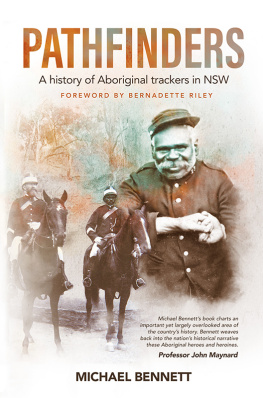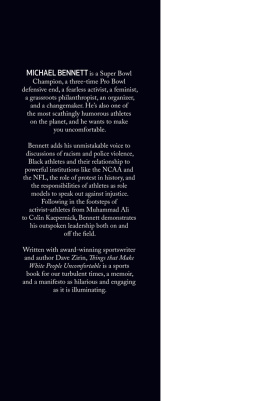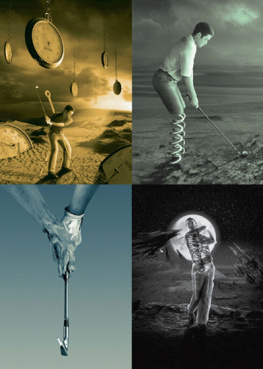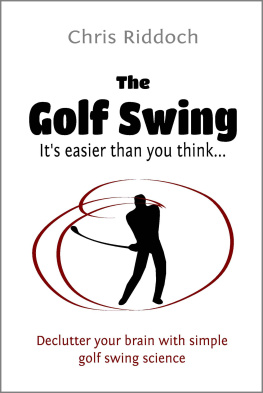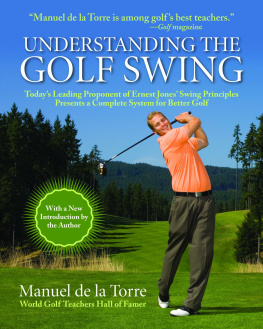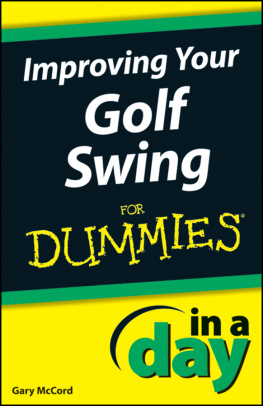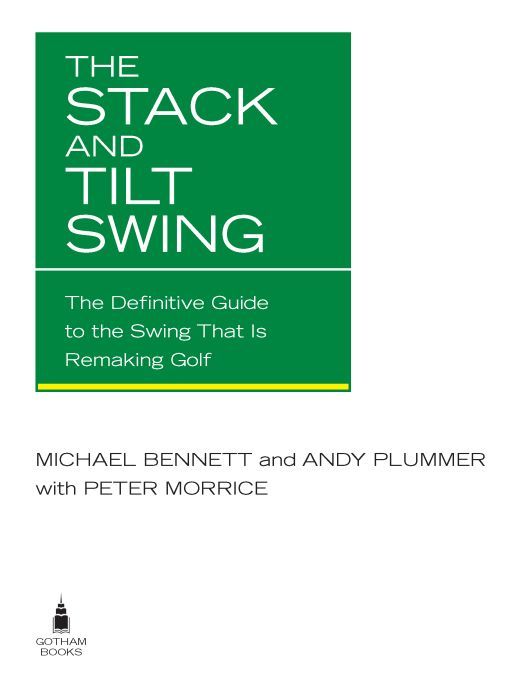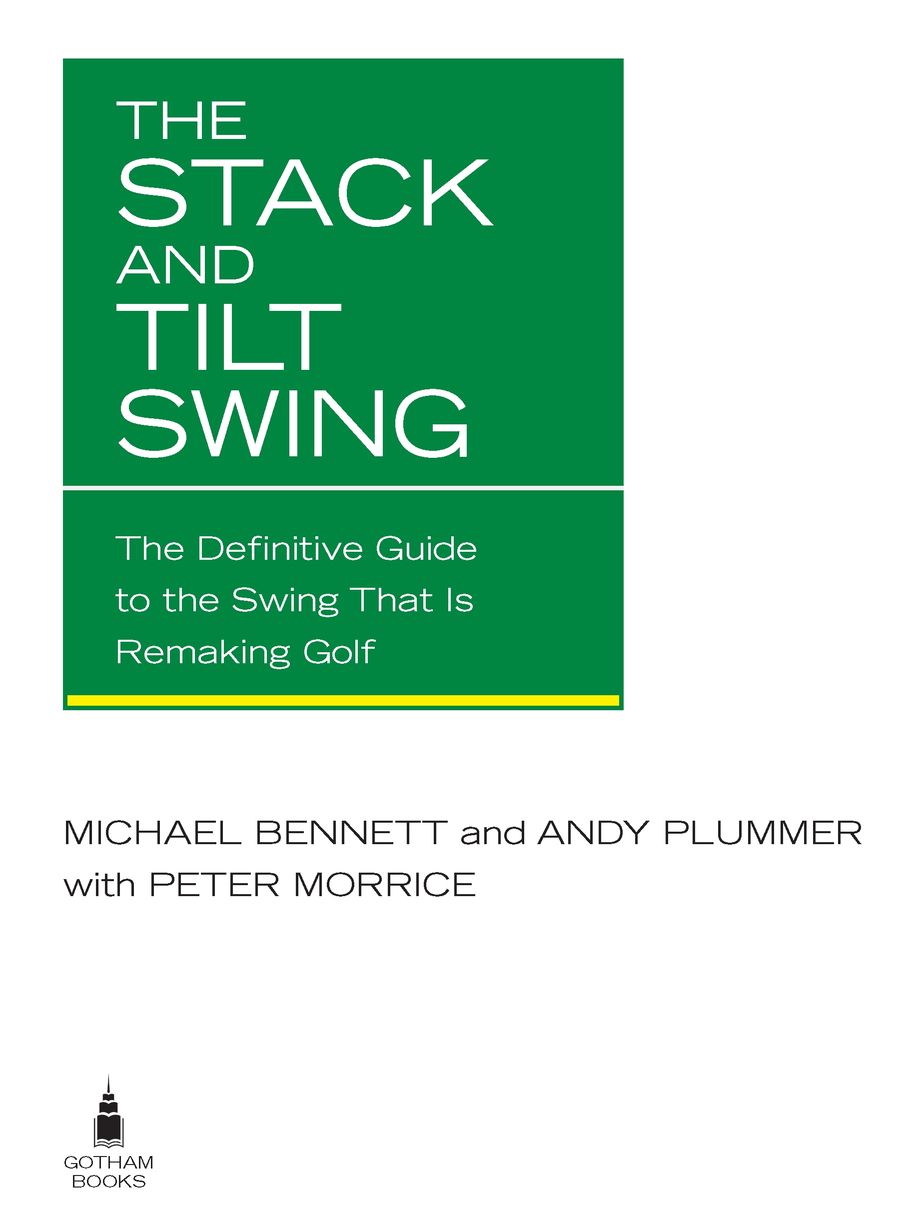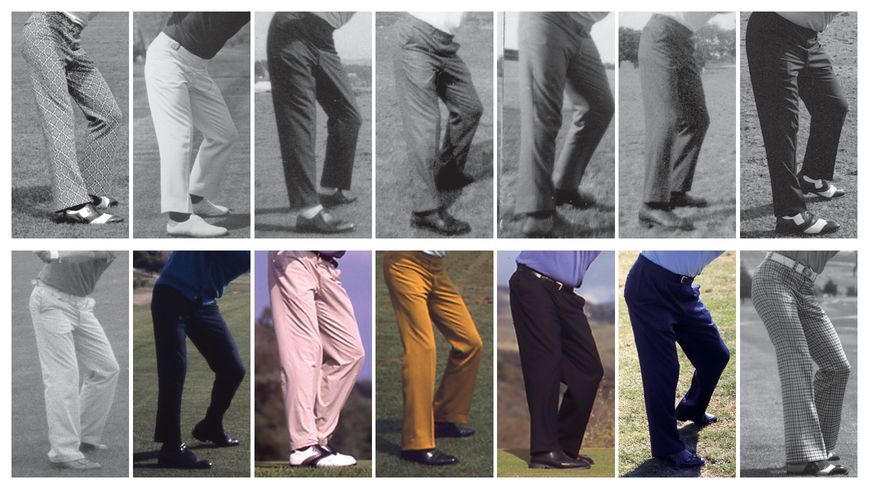Table of Contents
FOREWORD
DR. BOB ROTELLA
When you watch a PGA Tour event on television, you might think every player is hitting one perfect shot after another, and that the winner is the one with the hot putter. The truth is, theres a lot of variation in ball-striking on the tour. Players are always trying to find ways to improve their misses, to make their bad shots better. Which is exactly the approach that Andy and Mike take in their teaching.
One thing that makes these guys so well suited for teaching on tour is their earnest dedication to their students. They are as committed to their players as any teacher Ive ever seen. You can find them on tour practice ranges every week, every day. Thats how passionate they are about what they doand about the players who have put their trust in them. This is a huge component of the student-teacher relationship.
Andy and Mike also understand the big picture of playing professional golf. They know that to be successful their players have to learn to get the ball in the hole, and that comes from a lot more than swing mechanics. By organizing their students practice routines and off-weeks, Andy and Mike have helped them separate working on the swing from playing competitive golf. That really impresses me. It shows a level of discipline and understanding that only great teachers have.
My experience as a sport psychologist tells me that the best thing you can do to help a golfer is to give him something he can believe in. Andy and Mike clearly are doing that for their playersand they have a tough task because many of the moves they teach seemingly contradict what is commonly taught today. But their explanations make sense, and then they break out a notebook full of pictures of the great champions demonstrating what theyre saying. Suddenly it doesnt seem so radical.
Another thing that strikes me about these two is that their list of tour students has grown by word of mouth alone. Ive never heard of them walking up to players and trying to win them over. Their approach is soft-spoken and based on results, not salesmanship. Players see their guys doing well, hitting the ball better, and they want to know more. Thats how theyve established themselves on tour.
The good news for golfers everywhere is that the work Andy and Mike are doing is starting to trickle down to the golfing public, and this book will accelerate things. In the end, average golfers will be the biggest beneficiaries, because the tour has served as a testing ground for the instruction. If world-class players like Mike Weir and Aaron Baddeley can quickly see positive results, imagine what the swing can do for the weekend player trying to break 90.
Forty years ago, Bob Toski was a revolutionary teacher who changed the way golf was taught; twenty years later, David Leadbet ter did the same. Now we have Andy and Mike, and Id put them in the same conversation. They have joined a small group of teachers who have developed a different approach and seen it catch on. Time will tell if their system earns a place in the history of golf instruction, but for today, its the hottest method in the gameand now its literally in your hands.
INTRODUCTION
If all of the golf instruction books, videos, and lessons for the last hundred years had taught people to keep their weight on the left side and to swing their hands inward, we would have generations of golfers drawing the ball instead of slicing. Golf would be a different game. Instead, most instruction today teaches moves that lead not only to a slice but also to hitting the ground behind the ball, which has inhibited the development of players and the game itself. Golfers are either learning the wrong things, or the right things in the wrong order. Either way, their games are not improving.
Why is this happening? For one, there is no consensus on the basic physics of the game, such as what makes the ball go where it goes. Plus, there is no universal language for golfers to communicate the moves theyre making or the shots theyre hitting. Consequently, theyre forced to use vague clichs, like I swung too fast or I looked up, or other bits of handed-down jargon.
These impediments have made the barrier of entry into golf unnecessarily high. Golfers routinely leave the game out of frustration, lack of direction, regression, or improvement that comes too slowly. Our method is based on geometric principles that are familiar to all, and not on the technique of a random champion golfer or even a generation of successful golfers. It so happens that many players already exhibit the correct swing geometry, whether they know it or not, but modern instruction has not helped them to find it.
This book, then, is not an examination of any particular players swing but a tool for measuring the difference between a good player and a poor player, and the difference between a good shot and a poor shot. As the old saying goes, golf is a game of inches: Were measuring the inches to make golf instruction understandable and accessible to all players. Remember, geometry and physics are the same for everyone; the anatomy of the individual players body dictates the actual swing mechanics.
We came to our conclusions and devised the system youre about to learn not just by studying how certain professionals hit the ball, but by applying the rules of science. Then we found evidence of these principles in the games best players, past and present. But equally important, the principles of Stack & Tilt can be seen on driving ranges and golf courses everywhere. Our decade of research has allowed us to identify a good swing and to recognize all of its pieces. It has been said that the essence of science is classification; through classification we can unlock the pattern for playing golf simply and in an organized way.
As youll see, much of Stack & Tilt is not new. Elements like straightening the right leg on the backswing, swinging the hands on an inward path, and keeping the weight on the front side can be found in many books that predate us. What is new is the establishment of true fundamentals and the explanations of how they function.
Straightening the right leg on the backswing is one of the distinctive moves of Stack & Tilt. These players won more than fifty major championships illustrating this concept.
Swinging the hands well to the inside instead of straight back is a common trait among great ball-strikers.
WHAT IS STACK & TILT?


